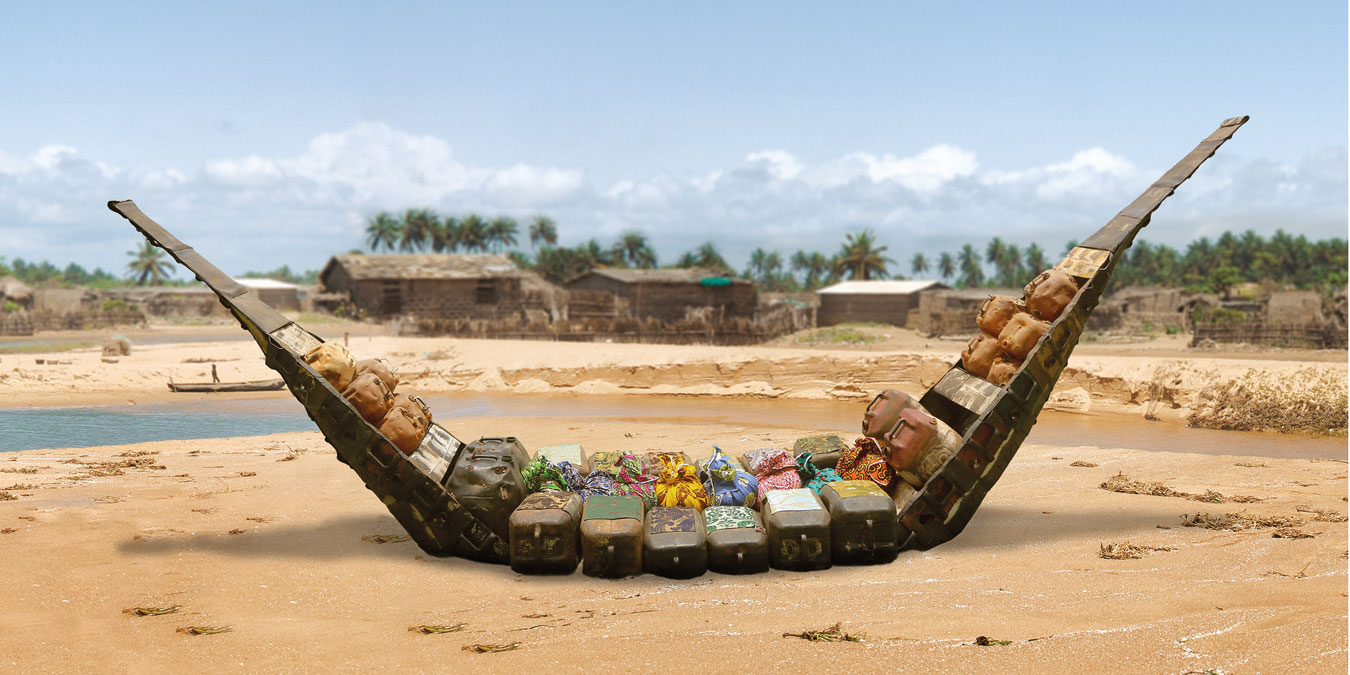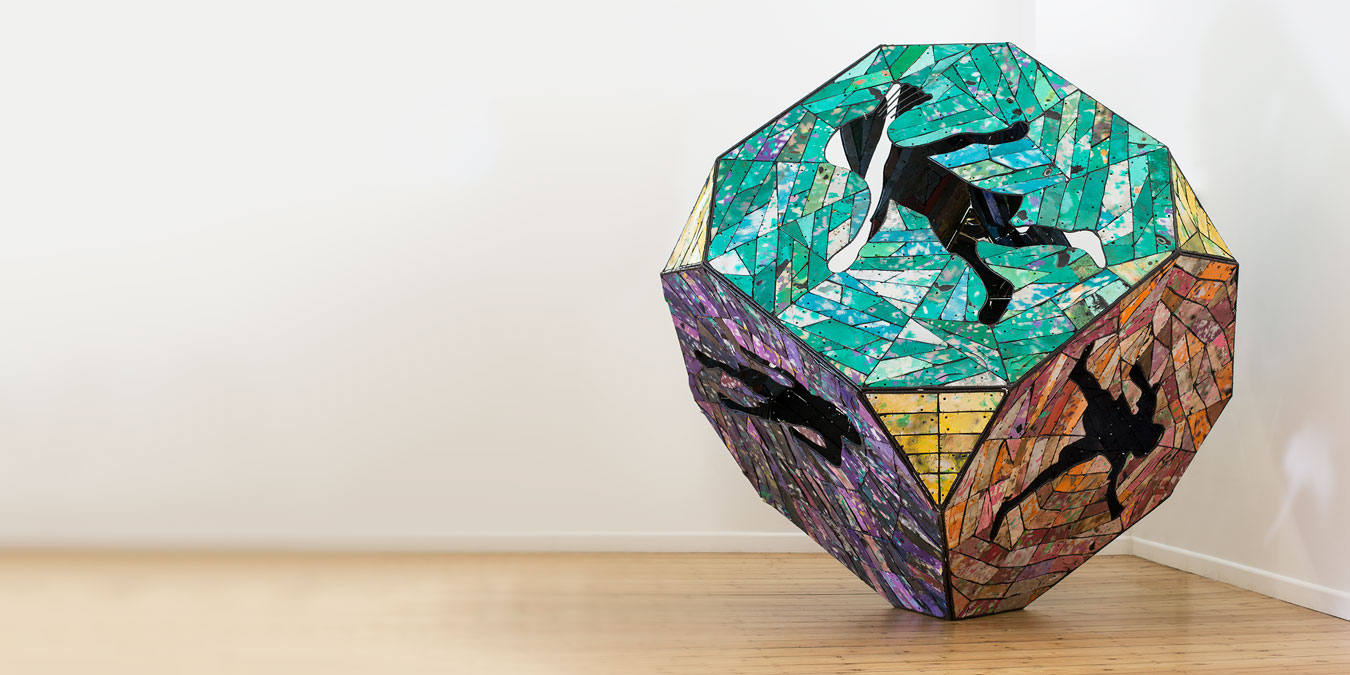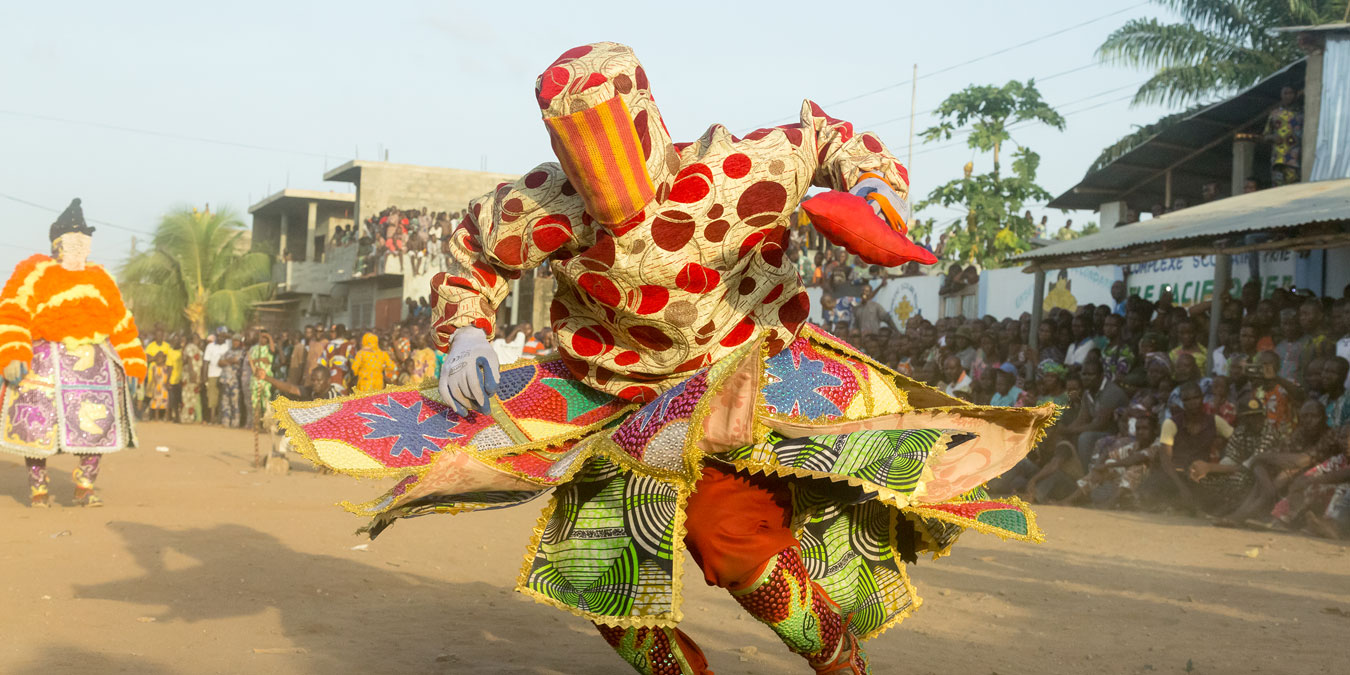ROMUALD HAZOUMÈ: ALL IN THE SAME BOAT
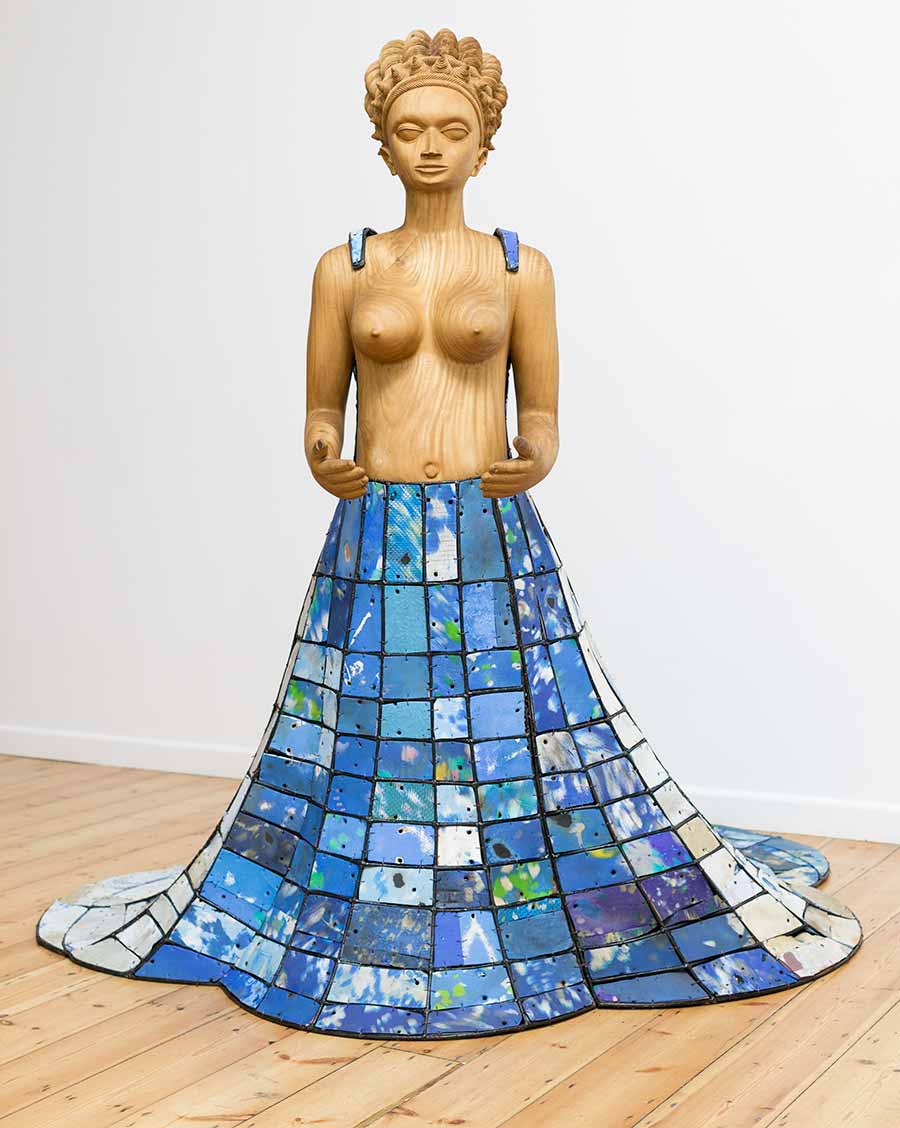
Wood, metal, plastic, 182 x 180 x 190 cm.
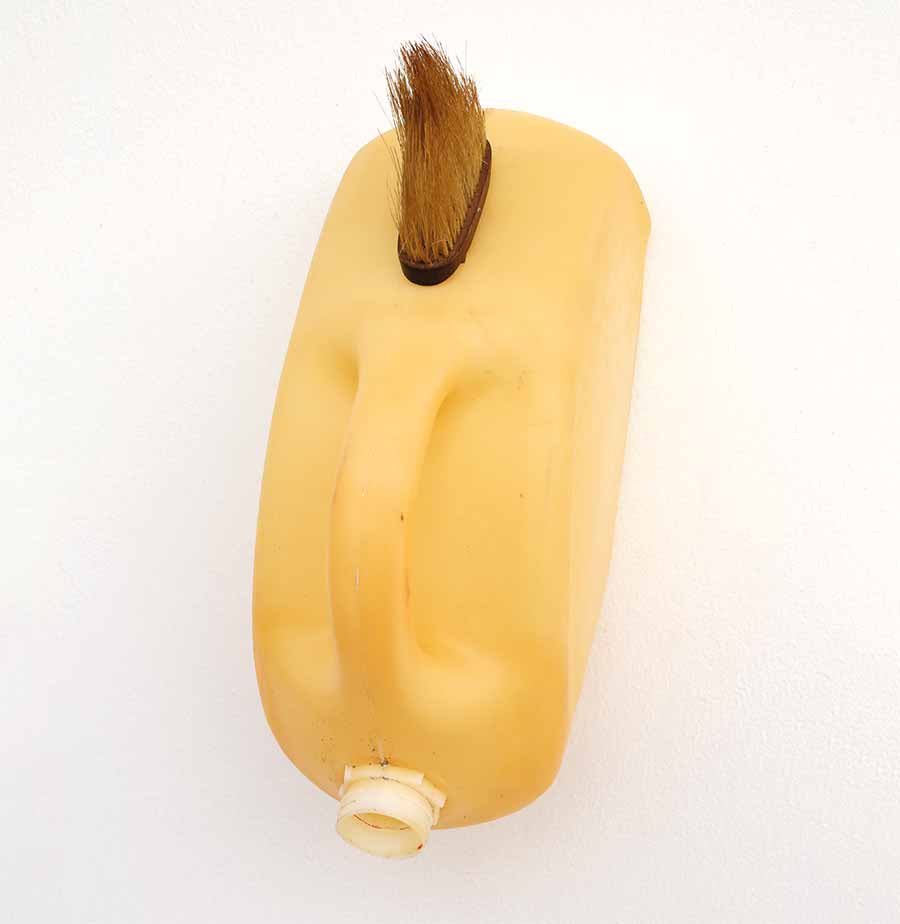
Found objects, 33 x 14 x 19 cm.
Internationally acclaimed artist Romuald Hazoumè (b. 1962) will present an ambitious new exhibition on the theme of immigration at October Gallery during October and November 2016. This will be the artist’s fourth solo exhibition at the London based gallery and will consist of three major installations, paintings, photography and masks. Hazoumè’s works are humorous and wryly political. His assemblages are specifically tied to his vision of society and his take on global problems. Hazoumè’s timely exhibition, which will feature a five-metre long crashed boat and a die made of thousands of found flip-flops, addresses the movement of people across the world and the dramatic narratives created by migrants forced by war or famine to flee their home country.
Hazoumè’s installation, Tricky Dicey Die (2016), presents the stark realities of choosing to attempt the crossing, at the mercy of callous human traffickers whose decrepit vessels are in ever-diminishing supply. The die in question, a truncated cube, is loaded against any successful outcome. The numbers on each of the usual faces are replaced by the outlined shape of a dead child, hauntingly reminiscent of the image of Alyan Kurdi. The cut-off corners of the cube provide eight new, triangular surfaces, which represent ‘success.’ Mathematically speaking, there is a 25% greater probability (8:6) of escaping alive once the dice are rolled, but in reality the shape of the die is such that the chances of it balancing on one of the small triangular surfaces is far less likely than that the hexahedron’s weight will ensure it finally comes to rest with a child’s silhouette on top. The die is covered with recuperated sandals, found washed ashore on the beaches of Benin, so that each sandal sole stands in place of a lost human soul.
Mutti (2016), comprises a three dimensional carved sculpture of an African woman, with open hands, covered in a robe composed of material made from the same recovered sandals. The title comes from the German child’s word for Mother – perhaps best rendered in English as Mummy! Here the recovered sandals have been given a welcome and a place by the feminine figure, that combines traits of an African female deity, the German Chancellor – Angela Merkel, who first welcomed fleeing refugees to Germany, and the universal figure of the kind and compassionate mother that every human being recognizes in his or her own Mother.
Cry of the Whale (2016) uses Hazoumè’s iconic jerry-cans to construct a rotten boat that, breaking in two spills its human cargo into the water. Because of the way in which the stern and prow sink, the image of the jaws of a great fish can be seen about to swallow – or regurgitate – them, as in the story, known to Christians and Muslims alike, of Jonah and the Whale. The inexpressibly sad music accompanying this piece is composed of the haunting songs of whales. It suggests that the cetaceans, long understood to be intelligent creatures and known to help save drowning humans, are communicating their concern about the horrors of the scenes they witness.
Romuald Hazoumè is a multi-faceted artist: a painter, sculptor, photographer and filmmaker, his powerful creations mark him as one of the most innovative and exciting personalities to emerge from Africa. Hazoumè’s work first came to prominence in the UK with the inclusion of his ‘masks’ in the Saatchi Gallery’s ‘Out of Africa’ show, in 1992. In the past twenty years his work has been widely shown throughout Europe, the United States and Asia, including the British Museum, the Guggenheim Bilbao, the Museum of Arts and Design, New York, the Irish Museum of Modern Art and recently this year, in two different sites at Gagosian, Paris.
His works are in prominent public and private collections around the world, including the permanent collections of the British Museum, London; Queensland Art Gallery, Brisbane and Neue Galerie, Kassel.
In 2007, Romuald Hazoumè was awarded the Arnold-Bode-Prize at documenta 12.



